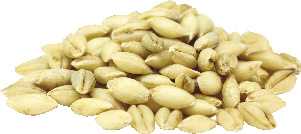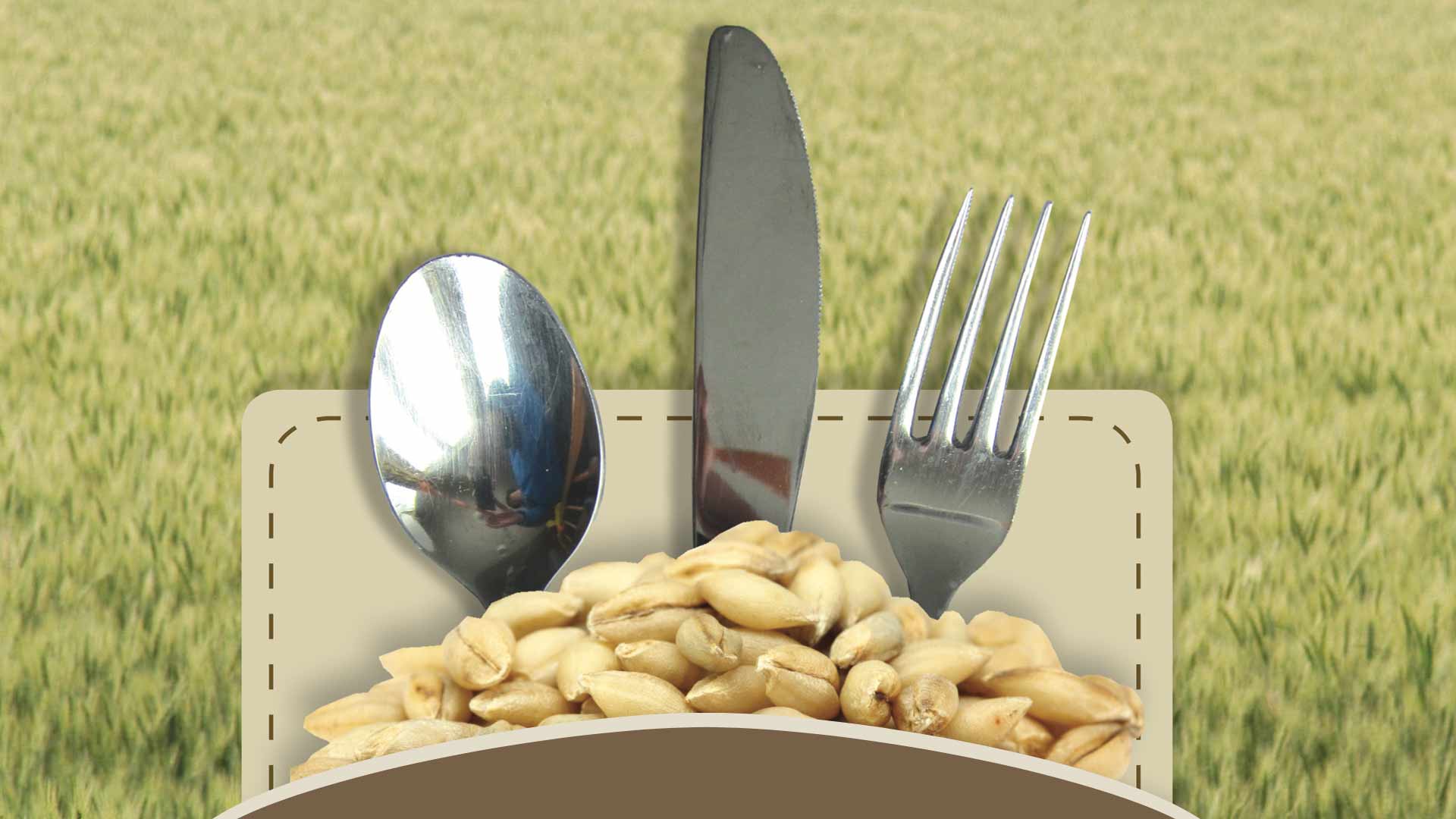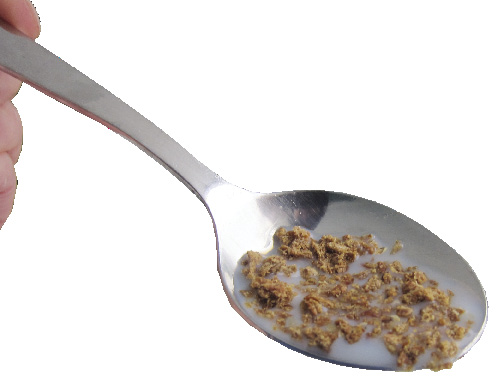Coming up on school menus: bread, pasta, tortillas, pizza, pancakes and other foods made with nutritious whole grains.
New federal standards for school meals, which are designed to combat rising rates of childhood obesity, will require more whole grains, like wheat and barley. The requirements offer opportunities for Minnesota farmers and food processors to meet the need.
That’s the conclusion of a recent AURI report on value-added uses for Minnesota wheat and barley. The report reveals nearly two dozen potential uses for the grains, including nutraceuticals and food supplements, building materials, fuel and livestock feed.
Among the most promising value-added opportunities: high beta-glucan barley, aleurone flour, hard white wheat and whole-grain snack food products, says AURI Project Manager Becky Philipp, who led the study. Longer-term opportunities include specialty livestock feeds, straw building composites and biomass ammonia.
But whole grain foods offer the best prospects for adding value, says Dave Torgerson, executive director of the Minnesota Wheat Growers Association. Unlike corn and soybeans, wheat and barley are “not very competitive for industrial uses,” he says.
Wheat and barley use stagnant
The AURI report comes at a time when market demand for wheat and barley is flat, and Minnesota small grains production continues to lose ground to more profitable crops — mainly corn.
In the last 15 years, barley has gone from a major state crop, with more than a million acres, to a niche crop of fewer than 100,000 acres — virtually all produced under contract with malting companies.
Likewise, Minnesota wheat acreage has dropped by almost half since the mid-1990s, when production peaked at about 2.4 million acres. In 2012, Minnesota growers planted 1.4 million acres of wheat, down 10 percent from 2011.
The food industry “is highly focused on making food healthier,” says Charan Wadhawan, AURI food scientist in Crookston. Whole grain food product introductions, for example, grew 20-fold from 2000 to 2010. Major food companies, such as Minnesota-based Cargill, are introducing nutritious “kid-friendly foods,” such as whole wheat breakfast cookies and whole grain tortillas.
Yet, just one percent of Americans consume the recommended three whole grain servings per day. That gives Minnesota wheat and barley growers an opening to communicate the nutritional and health benefits of eating more whole grains,
Philipp says.
The National Association of Wheat Growers is already focusing on this, Torgerson says. Per capita wheat consumption in the U.S. has been dropping since 1997, “but promoting the health benefits of these grains could help reverse that  trend.”
trend.”
Likewise, “Minnesota growers could develop a strategy to position their wheat and barley products as premier whole grain products,” says cereal scientist Neil Doty, N.C. Doty & Associates, Fargo, N.D., who wrote the value-added uses report in conjunction with the Praxis Strategy Group of Grand Forks, N.D.
To promote that effort, AURI is organizing industry forums for Minnesota millers, bakers, food manufacturers, and snack food companies to pitch some of the ideas in the report. “We’re excited to begin this phase of the project,” Philipp says.
“It is our hope that consumers will latch on to the whole grains dietary concept, and push food companies into purchasing specialty grains from the producers,” says Marv Zutz, director of the Minnesota Barley Growers Association.
Torgerson agrees. Minnesota wheat and barley growers are looking to “food industry players to move this along. If food companies develop new products that increase wheat and barley consumption, that will benefit growers, too.”
 High beta-glucan barley: Packed with healthy fiber
High beta-glucan barley: Packed with healthy fiber
Beta-glucan, the soluble fiber portion of barley, has been shown to lower cholesterol. New barley varieties that are high in beta-glucan have already been developed for Minnesota, says Zutz. Meanwhile, multinational food company ConAgra recently introduced SustaGrain® high-fiber barley flour and cereal flakes, which contain three times more soluble fiber than whole oats.
Demand for high beta-glucan barley could exceed one million bushels a year, according to Doty, the report author. So far, though, “food companies have been reluctant to contract for high beta-glucan barley,” Zutz says, and growers have been unwilling to take a chance on growing those varieties without contracts, because they aren’t suitable for malting.
“Our hope is that smaller food companies can make inroads into the food market,” Zutz says, creating a demand for high beta-glucan barley.
Aleurone flour: Abundant and super-nutritious
Aleurone, a component of wheat and barley kernels, is produced in large quantities as a byproduct of flour milling. Because it discolors refined flour, it’s sold as low-value animal feed. Yet, the aleurone layer is very rich in nutrients, especially vitamin B6, niacin and vitamin E, plus fiber and antioxidants.
Responding to growing demand for whole grain flour products, Horizon Milling, a division of Minnesota-based Cargill, has developed a proprietary process for milling aleurone flour. The company’s GrainWise® Wheat Aleurone offers food-makers a way to add dietary fiber and other nutrients to flour-based products without changing color, taste or texture, the AURI report says.
“As the public becomes more aware of the benefits of whole wheat and barley and their antioxidant contributions,” Doty says, “mill products like aleurone flour will be in demand to supply a concentrated source of nutrients.”
Hard White Wheat: Kids Like It!
The secret to getting kids to eat — and enjoy — whole grain foods could be hard white wheat.
Children often object to the color, texture and taste of traditional whole wheat products made from hard red wheat. But studies have found that school children couldn’t tell the difference between foods made with refined white flour and whole hard white wheat flour.
“Wheat breeders, millers, and food manufacturers involved in school feeding have embraced the use of whole white wheat to stealthily introduce whole grains into the school food service industry,” Doty says.
AURI and Partners
Idea to reality:
The Minnesota Association of Wheat Growers and the Minnesota Barley Growers Association wanted to identify new or alternative uses for wheat and barley.
AURI’s role:
AURI revisited the 2002 National Association of Wheat Growers New and Improved Wheat Uses Audit, expanded that work, and identified the best potential new and value-added uses for Minnesota wheat and barley.
Outcomes:
AURI staff are sharing the report findings at food industry forums for small- and medium-sized millers, bakers, food manufacturers, and snack-making companies with the goal of increasing knowledge about these possible new uses, which will lead to new products and processes that add value to these commodities.
Partners:
Minnesota Association of Wheat Growers; Minnesota Barley Growers Association; Neil Doty of N.C. Doty & Associates; Praxis Strategy Group.

